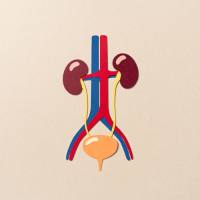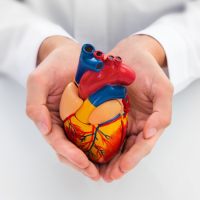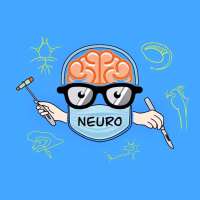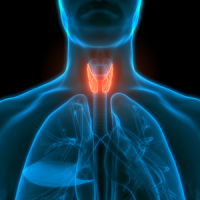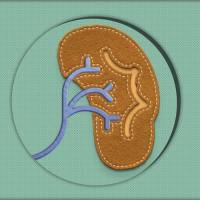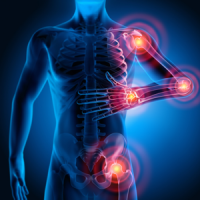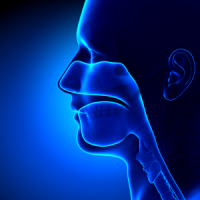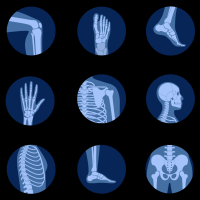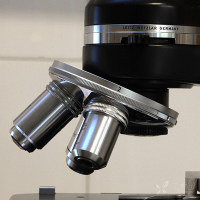康复科研博士团:运动康复SCI论文导读2024-11
新刊速递
每月带您读英文核心,这个月英文文献分享刚刚开始!
本文内容较长,为了优化阅读体验,欢迎大家点击标题展开相应内容。
1.《British Journal of Sports Medicine 》
JCR:Q1;IF:11.6
Quantitative analysis of effectiveness and associated factors of exercise on symptoms in osteoarthritis: a pharmacodynamic model-based meta-analysis
运动对骨关节炎症状的有效性和相关因素的定量分析:基于药效学模型的荟萃分析
【Abstract】
Objective: This study aims to evaluate the time point and magnitude of peak effectiveness of exercise and the effects of various exercise modalities for osteoarthritis (OA) symptoms and to identify factors that significantly affect the effectiveness of exercise.
Design: Pharmacodynamic model-based meta-analysis (MBMA).
Data sources: Embase, PubMed, Cochrane Library, Web of Science and Scopus were searched for randomised controlled trials (RCTs) examining the effect of exercise for OA from inception to 20 November 2023.
Eligibility criteria: RCTs of exercise interventions in patients with knee, hip or hand OA, using Western Ontario and McMaster Universities Osteoarthritis Index (WOMAC) subscales or Visual Analogue Scale (VAS) pain scores as outcome measures, were included. The minimum clinically important difference (MCID) for WOMAC total, pain, stiffness, function and VAS pain was 9.0, 1.6, 0.8, 5.4 and 0.9, respectively.
Results: A total of 186 studies comprising 12 735 participants with symptomatic or radiographic knee, hip or hand OA were included. The effectiveness of exercise treatments peaked at 1.6–7.2 weeks after initiation of exercise interventions. Exercise was more effective than the control, but the differences in the effects of exercise compared with control on all outcomes were only marginally different with the MCID (7.5, 1.7, 1.0, 5.4 and 1.2 units for WOMAC total, pain, stiffness, function and VAS pain, respectively). During a 12-month treatment period, local exercise (strengthening muscles and improving mobilisations of certain joints) had the best effectiveness (WOMAC pain decreasing by 42.5% at 12 weeks compared with baseline), followed by whole-body plus local exercise. Adding local water-based exercise (eg, muscle strengthening in warm water) to muscle strengthening exercise and flexibility training resulted in 7.9, 0.5, 0.7 and 8.2 greater improvements in the WOMAC total score, pain, stiffness and function, respectively. The MBMA models revealed that treatment responses were better in participants with more severe baseline symptom scores for all scales, younger participants for the WOMAC total and pain scales, and participants with obesity for the WOMAC function. Subgroup analyses revealed participants with certain characteristics, such as female sex, younger age, knee OA or more severe baseline symptoms on the WOMAC pain scale, benefited more from exercise treatment.
Conclusion: Exercise reaches peak effectiveness within 8 weeks and local exercise has the best effectiveness, especially if local water-based exercise is involved. Patients of female sex, younger age, obesity, knee OA or more severe baseline symptoms appear to benefit more from exercise treatment than their counterparts.
【摘要】
目的: 评价运动效果峰值的时间点和幅度,以及各种运动方式对骨关节炎(OA)症状的影响,找出影响运动效果的显著因素。
设计:基于药效学模型的meta分析(MBMA)。
数据来源:为Embase、PubMed、Cochrane图书馆、Web of Science和Scopus,检索了从开始到2023年11月20日检查运动对OA影响的随机对照试验(rct)。
纳入标准:以西安大略和麦克马斯特大学骨关节炎指数(WOMAC)亚量表或视觉模拟量表(VAS)疼痛评分作为结果测量的膝关节、髋关节或手部OA患者的运动干预随机对照试验。WOMAC总分、疼痛、僵硬度、功能和VAS疼痛的最小临床重要差异(MCID)分别为9.0、1.6、0.8、5.4和0.9。
结果:共纳入186项研究,包括12735名有症状性或影像学表现的膝关节、髋关节或手部OA患者。运动治疗的有效性在运动干预开始后的1.6-7.2周达到顶峰。运动比对照组更有效,但与对照组相比,运动对所有结果的影响差异仅与MCID有轻微差异(WOMAC总分、疼痛、僵硬、功能和VAS疼痛分别为7.5、1.7、1.0、5.4和1.2单位)。在12个月的治疗期间,局部运动(加强肌肉和改善某些关节的活动)效果最好(与基线相比,12周时WOMAC疼痛减少了42.5%),其次是全身加局部运动。在肌肉强化训练和柔韧性训练中加入局部水基运动(如温水肌肉强化),WOMAC总分、疼痛、僵硬度和功能分别提高7.9、0.5、0.7和8.2。MBMA模型显示,基线症状评分较重的参与者、WOMAC总分和疼痛评分较年轻的参与者和WOMAC功能评分较肥胖的参与者的治疗反应较好。亚组分析显示,具有某些特征的参与者,如女性、年龄较小、膝关节OA或WOMAC疼痛量表上更严重的基线症状,从运动治疗中获益更多。
结论:运动在8周内达到最佳效果,局部运动效果最好,特别是局部水上运动。女性、年轻、肥胖、膝关节炎或更严重的基线症状的患者似乎从运动治疗中获益更多。
Infographic. Muscle-strengthening exercise for older adults: a critical
strategy for maintaining health and independence
信息图表,老年人肌肉强化运动:保持健康和独立的关键策略
【Abstract】
Muscle-strengthening exercise (MSE)—also known as strength, weight or resistance training—includes activities that use equipment such as free weights, resistance machines, resistance bands or body weight (eg, push-ups). While each method has unique characteristics and training settings, they all offer neuromuscular benefits that are dependent on individual training characteristics.
Individuals engage in MSE for various reasons, such as enhancing sports performance, aesthetic goals, rehabilitation for injury and improving overall fitness and health. Regular participation in MSE enhances muscle strength, power, endurance and skeletal muscle mass. For older adults, MSE is a critical component of healthy ageing, defined by the WHO as …
【摘要】
肌肉强化训练(MSE)——也被称为力量、重量或阻力训练——包括使用器械的活动,如自由重量、阻力机、阻力带或体重(如俯卧撑)。虽然每种方法都有独特的特点和训练设置,但它们都能提供依赖于个人训练特点的神经肌肉益处。
个人从事MSE有各种原因,如提高运动成绩、审美目标、受伤康复和改善整体健身和健康。定期参加MSE可以增强肌肉力量、力量、耐力和骨骼肌质量。对于老年人来说,MSE是健康老龄化的重要组成部分,世界卫生组织将其定义为……
2.《Journal of Physiotherapy》
JCR:Q1;IF:9.7
In people with shoulder pain,mobilisation with movement and exercise improves function and pain more than sham mobilisation with movement and exercise:a randomised trial
在肩痛患者中,通过运动和运动进行活动比通过运动和运动进行假活动更能改善功能和疼痛:一项随机试验
【Abstract】
Question: In people with shoulder pain, what is the effect of adding mobilisation with movement (MWM) to a standard exercise program on function and pain compared with sham MWM and the same exercise program?
Design: A randomised trial with concealed allocation, blinded outcome assessment and intention-to-treat analysis.
Participants:Seventy people with chronic atraumatic rotator cuff related pain, with a mean age 48 years (SD 10).
Interventions:The experimental group received MWM plus exercise and the control group received sham MWM plus exercise. Treatments were delivered twice per week for 5 weeks.
Outcome measures: The primary outcome measures were function (0 to 100 Shoulder Pain and Disability Index) and pain (0 to 10 Numerical Pain Rating Scale). Secondary outcomes were self-efficacy, perceived improvement and active pain-free range of movement. Assessment time points were at baseline (week 0), the end of the treatment period (week 5) and a follow-up 1 month after the end of treatment (week 9).
Results: At week 5, the experimental group improved more than the control group in function (MD –15 points, 95% CI –24 to –7), pain at night (MD –2.1, 95% CI –3.1 to –1.1), pain on movement (MD –1.5, 95% CI –2.5 to –0.6) and active range of movement in flexion (MD 16 deg, 95% CI 1 to 30), abduction (MD 23 deg, 95% CI 6 to 40), external rotation (MD 11 deg, 95% CI 4 to 17) and hand behind back (MD 20 deg, 95% CI 8 to 32). At week 9, benefits were seen in the Shoulder Pain and Disability Index (MD –9 points, 95% CI –17 to –1), pain at night (MD –1.9, 95% CI –2.9 to –0.8) and on movement (MD –1.3, 95% CI–2.3 to –0.3). The effects of the experimental intervention on other outcomes were mostly unclear due to wide confidence intervals. Blinding was successful.
Conclusion: Adding MWM to exercise improved function, pain and active range of movement in people with shoulder pain. These benefits were not placebo effects.
【摘要】
问题:对于肩痛患者,在标准运动计划中加入运动动员(MWM)与假MWM和相同的运动计划相比,对功能和疼痛的影响是什么?
设计:一项隐藏分配、盲法结局评估和意向治疗分析的随机试验。
参与者:70例慢性非创伤性肩袖相关疼痛患者,平均年龄48岁(SD 10)。
干预措施:实验组采用MWM加运动治疗,对照组采用假MWM加运动治疗。治疗每周2次,连续5周。
结果测量:主要结局指标为功能(0 ~ 100肩关节疼痛和残疾指数)和疼痛(0 ~ 10数值疼痛评定量表)。次要结果是自我效能、感知改善和主动无痛活动范围。评估时间点为基线(第0周)、治疗期结束(第5周)和治疗结束后1个月(第9周)的随访。
结果:在第5周,实验组改善比对照组功能(MD -15点,95% CI -24 - 7),晚上疼痛(MD -2.1, 95%可信区间-3.1到-1.1),疼痛在运动(MD -1.5, 95%可信区间-2.5到-0.6)和活动范围的运动弯曲(MD 16度,95% CI 1 - 30),绑架(MD 23度,95% CI 6 - 40),外部旋转(MD 11度,95% CI 4 - 17),手背后(MD 20度,95% CI 8 - 32)。在第9周,肩部疼痛和残疾指数(MD -9点,95% CI -17至-1)、夜间疼痛(MD -1.9, 95% CI -2.9至-0.8)和运动(MD -1.3, 95% CI - 2.3至-0.3)均有所改善。由于置信区间较宽,实验干预对其他结果的影响大多不清楚。致盲是成功的。
结论:加入MWM锻炼可以改善肩痛患者的功能、疼痛和活动范围。这些益处不是安慰剂效应。
High-intensity interval training results in greater walking capacity at 8 and
12 weeks than moderate-intensity locomotor training in chronic stroke
高强度间歇训练在8周和12周时比中等强度运动训练能提高慢性卒中患者的行走能力
【Abstract】
Question: Does high-intensity interval training improve walking capacity more than moderate-intensity training in chronic stroke survivors?
Design: Multicentre randomised controlled trial with concealed allocation and blinded outcome assessment.
Setting: Three rehabilitation laboratories in the United States.
Participants: Adults aged 40 to 80 years, with a single stroke 6 months to 5 years prior, walking speed ≤ 1.0 m/s, able to walk 10 m without continuous physical assistance and on a treadmill for 3 minutes at a speed ≥ 0.13 m/s. Key exclusion criteria were: arrhythmia or myocardial ischaemia on ECG-graded exercise test; hospitalisation for cardiac or pulmonary disease in the last 3 months; implanted pacemaker or defibrillator; and severe lower limb spasticity, ataxia or neglect. Randomisation of 55 participants allocated 27 to the high-intensity interval training and 28 to the moderate-intensity aerobic training.
Interventions: Both groups trained for 45 minutes three times/week for 12 weeks. High-intensity interval training involved 30-second intervals of walking at a maximum safe speed interspersed with 30 to 60-second rest intervals, targeting 60% heart rate reserve. Moderate-intensity training involved continuous walking with speed adjusted to maintain 40% of heart rate reserve progressing to 60% as tolerated.
Outcome measures: The primary outcome measure was distance walked in 6 minutes, assessed at baseline and 4, 8 and 12 weeks. Secondary outcome measures were self-selected and fastest gait speeds over 10 m, self-reported fatigue and aerobic capacity.
Results: Forty-two participants completed the study. There was no difference between groups in 6-minute walk distance after 4 weeks (MD 15 m, 95% CI –13 to 42), but a significant difference favouring the high-intensity interval group of 29 m at 8 weeks (95% CI 5 to 54) and 44 m at 12 weeks (95% CI 14 to 74). After 12 weeks, increases in self-selected and fastest gait speed were significantly greater in the high-intensity interval group, but there were no between-group differences in fatigue or aerobic capacity.
Conclusion: High-intensity locomotor training produces superior improvements in walking capacity and speed than moderate-intensity training if continued for 8 to 12 weeks.
【摘要】
问题:高强度间歇训练是否比中等强度训练更能提高慢性中风幸存者的行走能力?
设计:多中心随机对照试验,采用隐蔽分配和盲法结局评估。
地点:美国的三个康复实验室。
参与者:年龄40 - 80岁的成年人,6个月- 5年前有过一次中风,步行速度≤1.0 m/s,能够在不需要持续身体辅助的情况下以≥0.13 m/s的速度在跑步机上步行3分钟,步行10米。
主要排除标准:心电图分级运动试验中出现心律失常或心肌缺血;过去3个月内曾因心脏或肺部疾病住院;植入心脏起搏器或除颤器;严重的下肢痉挛、共济失调或忽视。55名参与者随机分配27人进行高强度间歇训练,28人进行中等强度有氧训练。干预措施:两组每周训练3次,每次45分钟,持续12周。高强度间歇训练包括以最大安全速度步行30秒,中间间隔30- 60秒休息,目标是60%的心率储备。中等强度的训练包括持续步行,调整速度以保持心率储备的40%,并在可容忍范围内提高到60%。
结果测量:主要结果测量是6分钟步行距离,在基线和4、8和12周进行评估。次要结果测量是自我选择和超过10米的最快步态速度,自我报告的疲劳和有氧能力。
结果:42名参与者完成了研究。4周后6分钟步行距离组间无差异(MD = 15 m, 95% CI = -13 ~ 42),但高强度间隔组在8周时为29 m (95% CI = 5 ~ 54)和12周时为44 m (95% CI = 14 ~ 74)有显著差异。12周后,高强度间歇组的自我选择和最快步态速度的增加明显更大,但在疲劳或有氧能力方面没有组间差异。
结论:如果持续8 - 12周,高强度运动训练对步行能力和速度的改善优于中等强度训练。
3.《Journal of Sport and Health Science》
JCR:Q1;IF:9.7
Enhancing the understanding between exercise and brain health: A new
tool of oxygen imaging
增进对运动与大脑健康的了解:一种新的氧成像工具
【Abstract】
Oxygen is pivotal for brain metabolism, and understanding its dynamics within the cerebral cortex is essential for both fundamental neuroscience and clinical practice. Recently, Beinlich et al.2 introduced a novel tool, the Green enhanced Nano-lantern (GeNL), a bioluminescent oxygen sensor that allows for the real-time, high-resolution monitoring of oxygen distribution in the living mouse cerebral cortex. This bioluminescent oxygen sensor is based on the principle of Förster Resonance Energy Transfer between the enzyme NanoLuc and the fluorescent protein mNeonGreen. This innovative design allows GeNL to emit light in the presence of oxygen, with the intensity of the luminescence providing a direct measure of local oxygen levels. By genetically encoding this sensor, it can be expressed directly in the neurons of interest, allowing for precise, continuous monitoring of oxygen dynamics within specific regions of the brain. This capability represents a substantial improvement over previous methods,3, 4, 5 offering higher spatial and temporal resolution and the ability to observe changes in oxygen levels in real-time under various physiological conditions. The application of GeNL technology thus opens new avenues for exploring how oxygen is regulated in the brain and its role in both health and disease.
【摘要】
氧是脑代谢的关键,了解其在大脑皮层内的动态对于基础神经科学和临床实践都是必不可少的。最近,Beinlich等人2介绍了一种新型工具,绿色增强纳米灯(GeNL),这是一种生物发光氧传感器,可以实时、高分辨率地监测活体小鼠大脑皮层中的氧气分布。这种生物发光氧传感器是基于Förster共振能量转移酶NanoLuc和荧光蛋白mNeonGreen之间的原理。这种创新的设计使GeNL能够在氧气存在的情况下发光,发光的强度可以直接测量当地的氧气水平。通过基因编码这种传感器,它可以直接在感兴趣的神经元中表达,从而可以精确、连续地监测大脑特定区域内的氧气动态。这种能力比以前的方法有了很大的改进,提供了更高的空间和时间分辨率,并且能够在各种生理条件下实时观察氧气水平的变化。因此,GeNL技术的应用为探索氧气在大脑中的调节方式及其在健康和疾病中的作用开辟了新的途径。
4.《BioMed Central 》
JCR:Q1;IF:4.3
Effect of low-intensity muscle strength training on postoperative
rehabilitation and adverse events in patients with knee osteoarthritis over
55 years of age: a meta-analysis
低强度肌力训练对55岁以上膝骨关节炎患者术后康复和不良事件的影响:一项荟萃分析
【Abstract】
Background:This study aimed to study the effect of low-intensity muscle strength training on postoperative rehabilitation of patients with knee osteoarthritis over 55 years of age and the incidence of adverse events by a meta-analysis.
Methods:We searched China National Knowledge Infrastructure (CNKI), WanFang, China Science and Technology Journal Database (VIP), PubMed, Web of science, and Embase databases for articles on the effect of low-intensity muscle strength training on the recovery of patients with knee arthritis. And meta-analysis combined effect was performed in R 4.2.2 software. Quantitative analysis and risk of bias were assessed by Begg’s and Eegger’s test.
Results:Meta-analysis showed that the effect of low-intensity muscle strength training on postoperative knee range of motion in patients with knee arthritis was mean difference (MD) = 5.20, 95% CI=[4.00, 6.40], τ2 = 0.43, P = 0.34; the effect on postoperative muscle strength was standard mean difference (SMD) = 1.24, 95% CI=[0.86, 1.61], τ2 = 0.07, P < 0.01; the effect on postoperative knee joint score was MD = 5.88, 95%CI=[2.09, 9.67], τ2 = 16.60, P < 0.01; the effect on postoperative knee visual analogue scale (VAS) score was MD=-1.12, 95%CI =[-1.43, -0.81], τ2 = 0.09, P < 0.001; the effect on the incidence of adverse events was RR = 0.85, 95%CI= [0.52 1.39], τ2 = 0.79, P = 0.04.
Conclusion:Low-intensity muscle strength training can improve the muscle strength of the affected limb and knee joint score, reduce the VAS score and the incidence of adverse events in patients with knee osteoarthritis over 55 years of age after surgery, but it has no effect on the postoperative knee range of motion, so it can be considered as appropriate in clinical selection.
【摘要】
背景:本研究旨在通过荟萃分析研究低强度肌力训练对55岁以上膝骨性关节炎患者术后康复的影响及不良事件的发生率。
方法:我们检索了中国知网(CNKI)、万方、中国科技期刊数据库(VIP)、PubMed、Web of Science和Embase数据库,检索了关于低强度肌力训练对膝关节关节炎患者康复影响的文章。采用r4.2.2软件对综合效应进行meta分析。定量分析和偏倚风险采用Begg’s和egger’s检验。
结果:meta分析显示,低强度肌力训练对膝关节关节炎患者术后膝关节活动度的影响平均差值(MD) = 5.20, 95% CI=[4.00, 6.40], τ2 = 0.43, P = 0.34;对术后肌力的影响标准均差(SMD) = 1.24, 95% CI=[0.86, 1.61], τ2 = 0.07, P < 0.01;对术后膝关节评分的影响:MD = 5.88, 95%CI=[2.09, 9.67], τ2 = 16.60, P < 0.01;对术后膝关节视觉模拟评分(VAS)的影响:MD=-1.12, 95%CI =[-1.43, -0.81], τ2 = 0.09, P < 0.001;对不良事件发生率的影响RR = 0.85, 95%CI= [0.52 1.39], τ2 = 0.79, P = 0.04。
结论:低强度肌力训练可提高55岁以上膝关节骨性关节炎患者术后患肢肌力及膝关节评分,降低VAS评分及不良事件发生率,但对术后膝关节活动范围无影响,在临床选择时可考虑采用。
Effects of multicomponent exercise intervention on cardiometabolic risk
factors in children and young adults with cerebral palsy:a multiple-baseline trial
多组分运动干预对儿童和青年脑瘫患者心脏代谢危险因素的影响:一项多基线试验
【Abstract】
Background:Adults with cerebral palsy (CP) have a high risk of cardiometabolic diseases. It is unknown whether this risk is elevated in young people with CP and whether exercise can reduce this risk. Therefore, we investigated the effects of the EXErcise for Cerebral Palsy (EXECP) intervention on cardiometabolic risk in children and young adults with CP and compared this risk to typically developing children and young adults (TDs).
Methods:Ambulatory male and female participants with spastic CP, aged 9–24 years, and age- and sex-matched TDs without musculoskeletal disorders were recruited. Participants with CP were measured at baseline, after a three-month control period manifesting normal development, and after the three-month strength, gait, and flexibility training intervention. TDs were measured at baseline and after the control period. They did not attend the intervention. Cardiometabolic risk factors included body weight, body fat percentage, and skeletal muscle mass index assessed with bioimpedance; resting systolic and diastolic blood pressure and aortic pulse wave velocity assessed with a non-invasive oscillometric device; fasting plasma high-density and low-density lipoprotein cholesterol, triglyceride, and glucose levels. Data were analyzed with independent samples t-tests and linear mixed-effects models adjusted for sex and age.
Results:The study involved 18 participants with CP (13 males, 9–22 year, mean 14.2 ± 4.4) and 17 TDs (12 males, 9–22 year, mean 14.6 ± 4.3). At baseline, participants with CP had a 1.0 (95% confidence interval (CI) [-2.0, -0.0]) kg/m2 lower skeletal muscle mass index than TDs. During the control period, no statistically significant between-group differences were observed in the change of any outcome. In the CP group, body weight (β = 1.87, 95% CI [1.04, 2.70]), fat percentage (β = 1.22 [0.07, 2.37], and blood glucose (β = 0.19, 95% CI [0.01, 0.37]) increased, while diastolic blood pressure (β=-2.31, 95% CI [-4.55, -0.06]) and pulse wave velocity (β=-0.44, 95% CI [-0.73, -0.16]) decreased. In the TD group, only body weight increased (β = 0.85, 95% CI [0.01, 1.68]) statistically significantly. In the CP group, no changes were observed during the intervention.
Conclusion:Young people with and without CP do not exhibit significant differences in most cardiometabolic risk factors. EXECP intervention may attenuate some adverse development trajectories occurring without the intervention but greater volume and intensity of aerobic exercise may be needed to reduce cardiometabolic risk.
【摘要】
背景:成人脑瘫(CP)患心脏代谢疾病的风险很高。目前尚不清楚患有CP的年轻人是否会增加这种风险,以及运动是否可以降低这种风险。因此,我们研究了脑瘫运动(EXECP)干预对脑瘫儿童和年轻人心脏代谢风险的影响,并将这种风险与正常发育的儿童和年轻人(td)进行了比较。
方法:研究招募了9-24岁的痉挛性CP患者和年龄和性别匹配的无肌肉骨骼疾病的td患者。CP患者分别在基线、三个月的正常发育对照期和三个月的力量、步态和柔韧性训练干预后进行测量。在基线和对照期后测量TDs。他们没有参加干预。心脏代谢危险因素包括体重、体脂率和骨骼肌质量指数(以生物阻抗评估);静息收缩压、舒张压和主动脉脉波速度的无创示波仪评估;空腹血浆高密度和低密度脂蛋白胆固醇,甘油三酯和葡萄糖水平。数据分析采用独立样本t检验和经性别和年龄调整的线性混合效应模型。
结果:本研究共纳入18例CP患者(男性13例,9-22岁,平均14.2±4.4)和17例TDs患者(男性12例,9-22岁,平均14.6±4.3)。在基线时,CP患者的骨骼肌质量指数比td患者低1.0 kg/m2(95%可信区间[-2.0,-0.0])。在对照组期间,各组间各项结果的变化均无统计学差异。CP组体重(β= 1.87, 95% CI[1.04, 2.70])、脂肪率(β= 1.22[0.07, 2.37])和血糖(β= 0.19, 95% CI[0.01, 0.37])升高,舒张压(β=-2.31, 95% CI[-4.55, -0.06])和脉搏波速(β=-0.44, 95% CI[-0.73, -0.16])降低。在TD组中,只有体重增加(β = 0.85, 95% CI[0.01, 1.68])具有统计学意义。在CP组中,干预期间未观察到任何变化。
结论:有和没有CP的年轻人在大多数心脏代谢危险因素上没有显着差异。EXECP干预可能会减弱一些没有干预的不良发展轨迹,但可能需要更大的有氧运动量和强度来降低心脏代谢风险。







